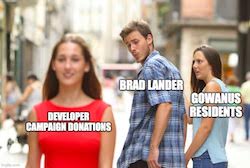


Edward William Bok, probably one of the most famous Dutch-Americans of the turn of the century, was a Pulitzer Prize-winning author and the editor of the Ladies' Home Journal (1889-1919). Born in Den Helder, Holland, he arrived in the United Sates as a six year old. His family settled in Brooklyn, where "Willem" attended Brooklyn public schools. And why am I telling you this, you may ask? Because his family lived in Carroll Gardens, of all places. How come I never knew that? I came across a biography of Bok written by Hans Krabbendam. I found it so incredibly interesting because the author includes a wonderful description of Bok's 1870's Brooklyn and Carroll Gardens in particular. Below is the passage I am referring to.
An excerpt from The Model Man: A Life Of Edward William Bok, 1863-1930
By Hans Krabbendam
Living in Brooklyn and working in Manhattan was the cheapest way to take advantage of New York City while escaping its problems. Brooklyn was less dirty, criminal, gloomy, corrupt, and taxed than its counterpart across the river. This could be expected from a city advertised as "The City of the Churches" where two hundred such edifices could be found and church membership was 50 percent higher than in New York.
When Brooklyn developed from a commercial town into an industrial city in the second half of the nineteenth century, its growing demand for blue collar workers led to a differentiation in the residential quarters. Locations along the East River shore were first choice for manufacturers and related businesses, pushing larger factories north. The combination of industrial development and population growth made many neighborhoods undesirable for habitation. The wealthy protected themselves in secluded neighborhoods, like the fashionable Brooklyn Heights with its mansions, churches, clubs and societies. the laboring classes were confined to the inner city within reasonable distance of the jobs. Those of the middle class who could afford it moved to the districts laid out in a ring around the old city. Despite the rapid industrialization in the 1860s almost 10 percent of Brooklyn's population had applied for financial aid at the close of the decade, and the worst had yet to come during the economic crisis of 1873. Apparently, not all classes profited equally from the city's development.
Signs of Brooklyn's expansion were everywhere. In 1869, Brooklyn's streets totaled 500 miles in length, half still waiting for buildings, and the city boasted of 150 miles of sewers. In 1871, almost 2,600 buildings were erected, among those the ones in Carroll Gardens, or South Brooklyn, an area with tenements and retail stores with dwellings on the second floor. One small section of Carroll Gardens had an unusual layout. Surveyor Richard Butts had planned four short streets with row houses and a small park. The lots were spacious, and the houses had gardens, and the inhabitants were middle-class merchants and professionals who worked in Manhattan and commuted, as Willem Bok did, by using the nearby Hamilton Avenue ferry. The two and three story houses were constructed in the Italianate and Neo- Greco styles from brownstone shipped from Connecticut and New Jersey. A short flight of stairs led to an imposing front door. Small local workshops provided mantles for fire places. mahogany and walnut shutters, banisters and moldings.
In the two decades Edward Bok lived in Brooklyn, its population doubled to 800,000. Brooklyn residents were predominantly white: blacks, mainly servants, comprised only 1.5 percent of the population. Nearly two thirds of the population was native born, though only 28 percent had both parents born in America. Carroll Gardens counted slightly more immigrant families than Brooklyn-at-large: 35 percent of the 14,000 residents was born outside the Unites States, mainly in Ireland and Germany. Despite their variety in ethnic background, the immigrants were rather homogeneous compared to later arrivals.
To read more about Bok, click here
For Home Page, click Pardon Me For Asking







.JPG)

2 comments:
great article what a facinating area carroll gardens is. why is this not landmarked is beyond me.
Well, lets hope that we can accomplish landmark status in the very near future.
I hope that lots of residents will attend next Monday's meting here in Carroll Gardens regarding just that: finally doing what needed to be done 30 years ago: extend the ridiculously small existing historical district here.
Post a Comment